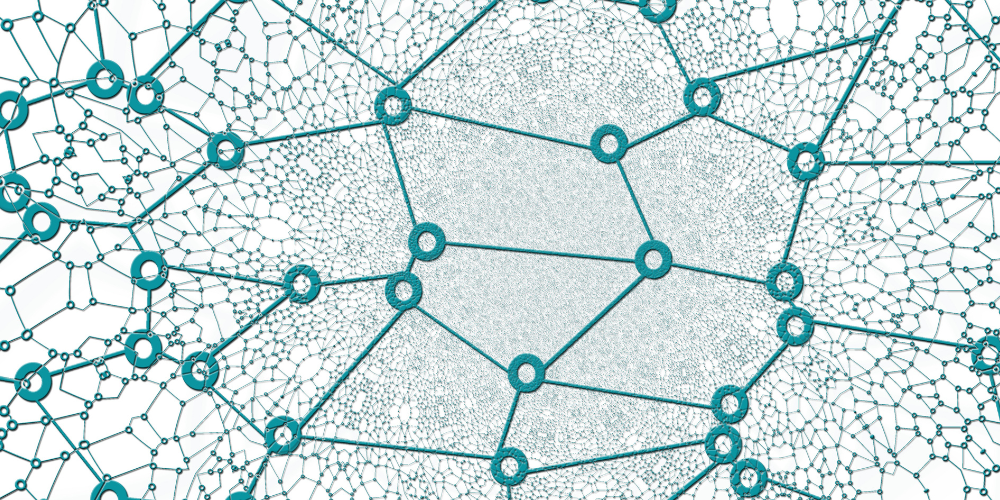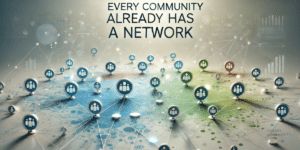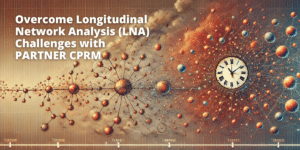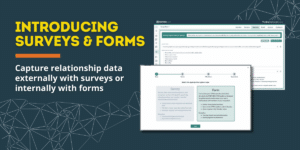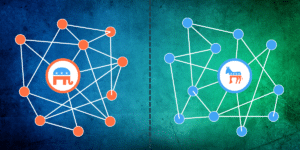In the digital age, understanding connections, relationships, and their complexities has become more crucial than ever. Here, Social Network Analysis (SNA) emerges as a powerful tool, offering insights that can transform various sectors, including public health, business, social sciences, and more. This blog post aims to be your comprehensive guide to understanding SNA, its key terminology, its numerous applications, and the software tools available to help you leverage it.
Table of Contents
What is Social Network Analysis?

Examples of SNA
Social Network Analysis is woven into the fabric of our everyday lives, often without us realizing it. Consider public health, where SNA plays a pivotal role in mapping disease spread. By understanding how a virus like COVID-19 disseminates within and between communities, authorities can develop effective strategies to contain its spread.
In the social impact sector, SNA serves as a powerful tool to reveal the hidden power dynamics within community groups. Non-profits can leverage SNA to identify key influencers in a community and use these relationships to enhance their engagement strategies. For example, a non-profit promoting a recycling initiative may use SNA to pinpoint who can help spread their message most effectively, ensuring that it reaches the right ears and spurs action.
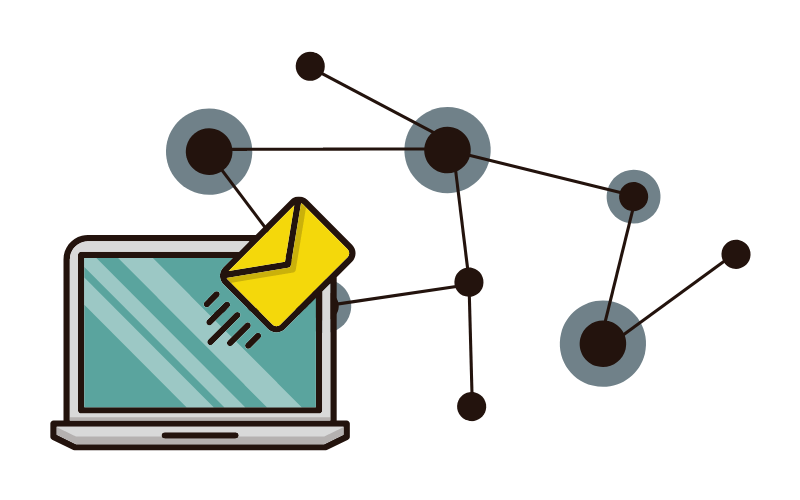
Get our monthly newsletter with partnership funding opportunities, news, and resources for cross-sector collaboration.
SNA Terminology, Measures, and Metrics
To grasp the intricacies of Social Network Analysis, it’s essential to understand its specific terminology and the value each term brings to the analysis. Here is a list of some key terms in SNA and a brief description of each:
Nodes: These are the individual entities within the network, such as individuals, organizations, or even countries. The analysis of nodes can reveal important players within the network and provide insights into their roles.
Edges: Represent the relationships or interactions between nodes. By examining edges, we can learn about the nature of relationships in the network, including their strength, frequency, and direction.
Centrality: This measures the importance of a node within the network. There are different types of centrality:
- Degree Centrality: It counts the number of direct connections a node has. High degree centrality suggests that a node is well-connected within the network and could have significant influence.
- Betweenness Centrality: This measures how often a node appears on the shortest path between other nodes. A high betweenness centrality can indicate a node’s control over information flow within the network.
- Closeness Centrality: It gauges how close a node is to all other nodes in the network. Nodes with high closeness centrality can often disseminate information more quickly across the network.
Density: This represents the overall connectedness of a network. A network with high density suggests a tightly knit community, which may be beneficial for efficient communication but could be susceptible to fast spread of information or diseases.
Clustering Coefficient: It measures the degree to which nodes in a network cluster together. A high clustering coefficient can indicate a tendency for the network to form tightly knit groups, which might have implications for the spread of information or behavior within the network.
Eigenvector Centrality: This is a measure of the influence of a node in a network. It extends the concept of degree centrality by considering the quality, not just the quantity of connections. Nodes connected to many well-connected nodes have a higher eigenvector centrality.
Understanding these terms can significantly enhance your ability to conduct and interpret Social Network Analysis, offering valuable insights into your field of interest.
Applications of SNA
Social Network Analysis boasts an impressively broad range of applications. In epidemiology, SNA aids in tracking disease spread, identifying potential hotspots, and informing containment strategies. In the realm of social media, SNA can pinpoint influencers and assess their impact, assisting brands in their marketing efforts.
In organizational studies, SNA can be used to improve communication flow, fostering better collaboration, and identifying bottlenecks that might hinder progress. Meanwhile, in the realm of public policy, SNA can dissect complex systems and relationships, thereby guiding more informed and effective decision-making.

Social Network Analysis Software
Harnessing the power of SNA requires the right tools. One such tool is PARTNER CPRM, developed by Visible Network Labs. This tool is more than just an SNA software; it’s a comprehensive community partner relationship management system, making it an ideal fit for those managing a network or coalition of partners.
PARTNER CPRM assists in collecting, analyzing, and visualizing network data, allowing for a deeper understanding of the dynamics within your network. It’s a powerful tool that can help maximize the impact of your coalition or network, streamlining your operations and strategic planning. To see how PARTNER CPRM can support and elevate your SNA efforts, I invite you to visit www.visiblenetworklabs.com/partner-cprm/.
Social Network Analysis: The Last Word
In conclusion, Social Network Analysis is a potent tool that unlocks a world of insights into the complex networks and relationships that shape our lives. With the right understanding and software tools like PARTNER CPRM, you can effectively harness the power of SNA, leading to better decisions and more significant impacts, no matter your field.
Frequently Asked Questions
Navigating the complex world of Social Network Analysis can raise several questions. Below, we address some of the most common queries that may arise as you delve into SNA.
A: Social Network Analysis (SNA) is a research methodology that studies patterns of relationships between interconnected entities, such as individuals or organizations. It visualizes these relationships in the form of a network, where ‘nodes’ represent entities, and ‘edges’ symbolize connections between them.
A: A classic example of SNA is in public health, where it is used to map the spread of diseases. By understanding how diseases like COVID-19 spread within communities, health authorities can develop effective containment strategies. In the social impact sector, SNA helps identify key influencers within community groups to enhance engagement strategies.
A: Conducting SNA involves several steps. First, you need to define the network—this includes identifying the nodes (entities) and edges (relationships). Next, you collect data about these nodes and edges, which can be done through surveys, interviews, or digital data sources. This data is then visualized as a network, using software tools like PARTNER CPRM. Finally, the network is analyzed using various metrics like centrality, density, and clustering coefficient, to draw meaningful conclusions.
A: The purpose of network analysis is to understand the relationships and interactions between various entities within a network. This can provide valuable insights into how information, resources, or behaviors spread across the network, identify key influencers or bottlenecks, and reveal patterns or structures within the network. These insights can inform strategic decisions in fields like public health, business, social sciences, and more.
A: Social Network Analysis refers to the methodology of studying and visualizing the relationships between interconnected entities within a network. It’s a tool used to dissect complex systems and relationships, which can be beneficial in many fields, from public health to social impact sectors.
A: The role of SNA is to provide insight into complex networks of relationships and interactions. It can reveal key players within a network, show how they interact with each other, and indicate how resources or information flows through the network. This knowledge can help organizations strategize, plan, and make informed decisions to achieve their goals.
Additional Reading & Resources
There’s a wealth of resources available for those looking to delve deeper into Social Network Analysis. Here is a mix of recommended reading, courses, and organizations that can further enrich your understanding:
Books
- “Analyzing Social Networks” by Stephen P. Borgatti, Martin G. Everett, and Jeffrey C. Johnson: A comprehensive guide to concepts, theories, and applications of social network analysis.
- “Social Network Analysis: Methods and Applications” by Stanley Wasserman and Katherine Faust: A classic text exploring various methods of social network analysis.
Online Courses
- Social Network Analysis courses on Coursera, including Network Analysis using Python and SNA from UC Davis.
- “Social Network Analysis for Beginners” on Udemy: An introductory course ideal for beginners with no prior experience in SNA.
Blog Articles
Introduction to social network methods: An online textbook about SNA methods.
Network Science Reference Guide: A beginner-friendly article providing a simple overview of SNA.
Organizations
- The International Network for Social Network Analysis (INSNA): A professional organization dedicated to promoting social network research. Their website provides a wealth of resources, including publications, events, and a directory of researchers in the field.
- Visible Network Labs: A research and consulting company specializing in network analysis. Their website provides resources, tools, and services for those interested in SNA.
Journals
- Social Networks: An international, peer-reviewed journal covering theoretical, methodological, and substantive themes in social network research.
- The Journal of Social Structure (JoSS): An electronic journal of the International Network for Social Network Analysis (INSNA), dedicated to structural analysis, a general category encompassing social network analysis.
These resources provide a robust foundation for anyone looking to expand their understanding of Social Network Analysis.
Get a Taste of PARTNER CPRM – Request a Demo Today!
If you want to explore how PARTNER CPRM can enhance your ecosystem and help you reach your shared goals, we encourage you to request a demo today! See how our platform can leverage network science to generate data-driven strategies today.
